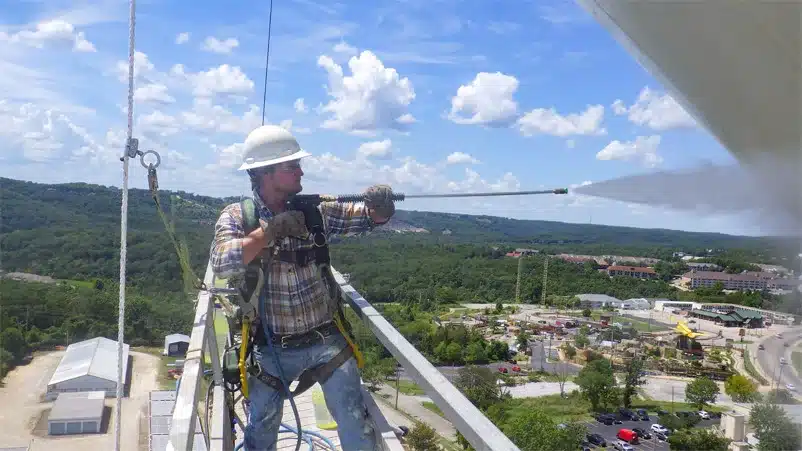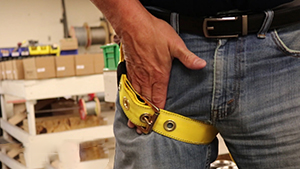Your cart is currently empty!
Can You Share A Full Body Harness?
We often receive the question, “Can we share a full-body harness?” It’s an important topic to address, and while the short answer is “Yes,” there are several other crucial factors to consider when it comes to keeping workers safe at heights. The safety of workers is of utmost importance, and ensuring proper fall protection measures is vital in any work environment where there is a risk of falling. In this discussion, we will delve into the potential risks and considerations associated with sharing safety harnesses, and why it is recommended to provide individual harnesses for each worker.

What Does OSHA Say About Sharing A Full Body Harness?
the Occupational Safety and Health Administration (OSHA) does not specifically address the sharing of fall protection harnesses in their regulations. However, OSHA emphasizes the importance of providing appropriate personal protective equipment (PPE) to workers and ensuring its proper use.
OSHA’s regulations require employers to assess the hazards present in the workplace and provide suitable PPE to protect workers from those hazards. Fall protection harnesses are considered essential PPE when working at heights where there is a risk of falling.
OSHA generally recommends that each worker has their own properly fitted fall protection harness to ensure individual safety. This is because proper fit and adjustment are critical to the effectiveness of fall protection equipment. Sharing harnesses can compromise the fit and increase the risk of accidents or injuries.
While OSHA does not explicitly state that fall protection harnesses should not be shared, it is advisable to follow industry best practices and provide each worker with their own properly fitted harness to ensure maximum safety and compliance with OSHA standards. It is also important to consult the most up-to-date OSHA guidelines and regulations for any specific requirements regarding fall protection equipment and usage.
The Risks Of Sharing A Full Body Harness
Not wearing a fall protection harness properly can put you at serious risk when working at heights. There are several potential dangers and consequences associated with this:
- Falls: When harness straps are too loose or improperly fitted, there is a significant risk that a worker could fall out of the harness when subjected to fall arrest forces. In such circumstances, the inadequate fit of the harness compromises its ability to secure the worker during a fall, increasing the chances of a potentially dangerous and injurious situation.

- Improper Distribution of Forces: A well-fitted harness is designed to spread the forces generated during a fall across your body, reducing the risk of injury. If the harness isn’t adjusted properly or worn correctly, these forces may concentrate on specific body parts, such as the groin or shoulders, which can cause serious harm.
- Strangulation or Suspension Trauma: Wearing a harness improperly or not connecting it to a suitable anchor point can lead to strangulation or suspension trauma. Suspension trauma occurs when you’re left hanging in a harness for an extended period, leading to reduced blood flow, unconsciousness, and even death. In addition, an improperly fitted harness can allow loose straps to become a strangulation hazard for workers in the event of a fall. If the straps are not properly adjusted, there is a possibility that they may tighten around the worker’s neck, leading to choking or strangulation. Particularly, the chest strap can rise up and constrict the neck area, posing a significant danger.
- Equipment Failure: Incorrect usage or improper fitting of a harness increases the chances of equipment failure. Buckles, straps, or D-rings that aren’t properly secured or adjusted may come undone or fail during a fall, rendering the harness ineffective.
- Reduced Mobility and Efficiency: Wearing a harness incorrectly can limit your movement and hinder your productivity. If the harness is too loose or too tight, it can make it difficult for you to perform tasks safely and efficiently.
- Uncertainty Surrounding the Condition and History of the Harness: When sharing a harness, it becomes uncertain what it may have gone through during its previous use. Was it exposed to fall arrest forces? Are the buckles damaged? These uncertainties highlight the importance of conducting a thorough visual inspection of the harness on a daily basis. By visually examining the harness, you can identify any potential issues or damages that may compromise its effectiveness.
In Conclusion
While there are no specific legal obligations regarding the sharing of a full-body harness among co-workers, FrenchCreek places great emphasis on the importance of individual safety for workers at heights. They strongly recommend that each worker be equipped with their own properly fitted full-body harness. This proactive approach serves to prioritize the well-being of each individual and minimize potential risks. In order to mitigate the hazards associated with wearing an ill-fitting harness, it is crucial for workers to receive comprehensive training on the correct usage and proper wearing of fall protection harnesses. Strict adherence to the manufacturer’s instructions and relevant safety regulations during the process of fitting and adjusting the harness is essential. Furthermore, regular inspections of the harness and other fall protection equipment are advised to ensure their good condition and effective functionality. For any inquiries or training needs related to fall protection equipment, please don’t hesitate to contact our director of training at [email protected]. By prioritizing safety above all else, we can create a secure working environment.
Stay safe!
The FrenchCreek Team